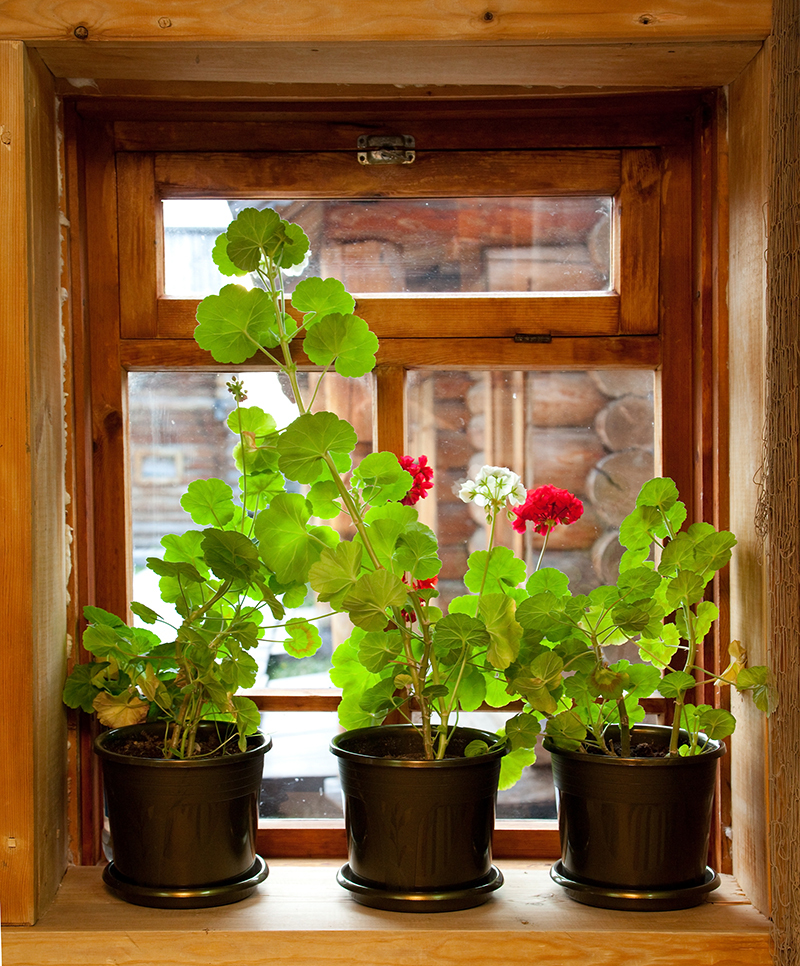Crafting the Perfect Environment for Cut Flowers
Posted on 25/08/2025
Crafting the Perfect Environment for Cut Flowers: A Comprehensive Guide
Cut flowers bring an immediate touch of beauty and elegance into any home or space. However, their ephemeral nature often leaves us wishing they could last a bit longer. The secret to enjoying their freshness and vibrancy for days--or even weeks--lies in crafting the perfect environment for cut flowers. In this article, we will explore in detail the essential steps and expert tips to maximize the lifespan, health, and beauty of your fresh floral arrangements. Whether you're a seasoned gardener, a florist, or just an enthusiast, this guide will empower you with knowledge and practical solutions.
Why Creating the Right Environment for Cut Flowers Matters
Anyone who loves fresh flowers knows how disappointing it can be to see them wilt prematurely. Understanding their post-harvest needs is crucial to extending their life. Flowers are living organisms, and, even after being cut, they continue to breathe, drink, and even grow a little.
- Maximized vase life ensures you enjoy your flowers longer.
- Reduces waste--a more sustainable choice for both wallet and planet.
- Enhances the overall aesthetics of your indoor space.
Let's dive into expert strategies for creating the perfect environment for cut flowers.

1. Start with the Best: The Importance of Freshly Cut Flowers
Choosing Quality Flowers
Your journey towards a longer-lasting bouquet starts with the flowers you select. Freshness is non-negotiable. When buying or cutting flowers, look for:
- Firm stems and upright posture
- Buds that are just beginning to open (for most types)
- Healthy, unbruised petals
- Vivid, natural color without brown edges
The Ideal Time for Cutting Flowers
If you're picking garden-cut flowers, do so early in the morning or late evening. At these times, plants are fully hydrated, which results in best quality blooms.
2. Preparing Cut Flowers Properly
Trimming the Stems--The #1 Secret
The first step after bringing cut flowers indoors is trimming the stems. Use a sharp, clean pair of scissors or floral shears and cut each stem at an angle, about one to two inches from the bottom. This increases the surface area available for water absorption and prevents the stem from sitting flat at the base of the vase, which can inhibit hydration.
- Trim stems under water if possible, to avoid air bubbles entering the vascular system.
- Remove any leaves that would sit below the water line to prevent rot and bacterial growth.
3. The Crucial Role of Water Quality
Water Temperature and Freshness
The right water can dramatically extend the life of cut flowers:
- Room temperature water (20-22?C or 68-72?F) is optimal for most varieties.
- Bulb flowers (like tulips and daffodils) prefer slightly cooler water.
- Change the water every 2-3 days to minimize bacteria and provide fresh hydration.
Before adding fresh water, thoroughly wash the vase with soapy water to kill bacteria.
Flower Food: Is It Necessary?
Commercial flower food contains a mix of sugar (for energy), acidifiers (to lower pH), and bleach (to control microbes). Add the recommended amount to your vase for best results. If commercial food isn't available, you can make a DIY version:
- 2 tablespoons lemon juice
- 1 tablespoon sugar
- 1/2 teaspoon bleach (optional, for sterilization)
- Mix into 1 quart (about 1 liter) of lukewarm water
4. The Perfect Environment: Light, Temperature, and Humidity
Where to Place Your Cut Flowers
The location of your vase has a huge impact on the longevity of your bouquet.
- Avoid direct sunlight--The heat accelerates water loss and flower deterioration.
- Keep arrangements away from direct drafts and heating/cooling vents.
- Choose a cool spot, ideally between 18-22?C (65-72?F).
- Never position flowers on top of fridges or near electronics, as the heat will dry them out.
Humidity and Air Flow
Flowers prefer a moderate humidity level (40-60%). Dry environments cause petals and leaves to shrivel quickly. In arid climates or heated/air-conditioned rooms, consider a portable humidifier nearby or mist the flowers very gently (avoiding blooms sensitive to mold).
5. Combating Ethylene Gas and Other Enemies
What is Ethylene Gas?
Ethylene is an invisible, odorless gas naturally produced by fruits, vegetables, and the flowers themselves as they age. It accelerates the aging process and can cause premature wilting and leaf drop.
- Keep cut flowers away from fruit bowls, especially apples and bananas.
- Remove fading or dead blooms promptly to minimize ethylene production.
Managing Microbes
Bacteria, fungi, and algae all thrive in the water of neglected vases. These pathogens block the flower's ability to absorb water. Follow these tips:
- Always use clean containers.
- Add a few drops of bleach to vase water as a precaution (especially in hot climates).
- Refresh the stems' cut every few days to keep the vascular system open.
6. Flower-Specific Care Tips
Each flower variety has unique post-harvest needs. For truly optimum cut flower environments, tailor your routine:
- Roses:
- Remove most leaves and all thorns below the water line.
- Recut stems every 2 days and wash the vase thoroughly.
- Tulips:
- Keep cool and out of direct sun; use cold water.
- Support with a tall vase--stems keep growing and bending!
- Hydrangeas:
- Submerge entire heads in water for an hour to revive.
- Spray leaves with water in very dry conditions.
- Daffodils:
- Let stems "bleed" in a separate vase for a few hours before mixing with other flowers (sap is toxic to others).
7. Further Tips for Enhancing Cut Flower Longevity
- Don't over-crowd--Give stems space in the vase for proper air circulation.
- Avoid touching petals as oils and pressure can bruise or damage them.
- Use clean tools and hands at every stage.
- For arrangements with woody stems, split the base vertically with a knife for greater water uptake.
- Remove and compost any wilted flowers immediately.
8. Arranging for Aesthetics and Health
Clever flower arranging techniques can also promote longer vase life. Follow these professional tips:
- Build groups by stem type and length--This prevents more delicate varieties from crushing below heavier flowers.
- Balance dense blooms with airy fillers for even water distribution and light exposure.
- Refresh the arrangement every few days by trimming stems and re-creating the design.
9. Environment Adjustments to Extend the Joy
Nighttime Placement
Some florists recommend moving arrangements to a cooler room or refrigerator overnight (but never below 4?C/39?F). This can add extra days to your bouquet's life, especially in hot climates.
Seasonal Considerations
Humidity, temperature, and light can vary by season. Adjust your practices accordingly:
- In winter, keep flowers away from radiators and fireplaces.
- In summer, cool locations and frequent water changes are key.
10. Sustainability and Ethical Choices in Cut Flowers
Opting for locally grown and seasonal flowers supports local farmers and the environment. Grown closer to home, these flowers spend less time in transit, so they tend to last longer and have a smaller carbon footprint. Additionally, be mindful of chemicals used; buying organic or pesticide-free flowers is healthier for your home and the planet.

Conclusion: Making Your Flowers Last and Shine
Crafting the perfect environment for cut flowers is a rewarding practice that celebrates nature's beauty and our ability to nurture life, even after it's brought indoors. Through attention to flower selection, water quality, temperature, lighting, and hygiene, you can significantly extend the vibrancy and joy of every bouquet. If you prioritize cleanliness, provide balanced hydration and optimal placements, your flowers will reward you with color, fragrance, and inspiration--not just for a fleeting moment, but for as long as nature allows.
Remember: Every small step adds up. Whether you're arranging garden roses, tulips, wildflowers, or a florist's mix, using these strategies will cultivate the ideal surroundings for fresh cut flowers and ensure your living arrangements achieve their full beauty and lifespan.
Key Takeaways for the Best Cut Flower Environment
- Choose the freshest flowers and trim stems at an angle.
- Use clean vases, fresh water, and change both regularly.
- Position arrangements away from heat, drafts, and fruit.
- Use flower food or a homemade equivalent for best results.
- Personalize care to the type of flower variety.
By following these expert steps, you're prepared to create the perfect environment for your cut flowers--ensuring they remain beautiful, aromatic, and fresh for days to come.
Latest Posts
Transform your garden with expert hydrangea tips
Why Red Roses Are Valentines' Most Cherished Gift
Crafting the Perfect Environment for Cut Flowers
Unearth 3 easy strategies to protect the elegance of your flowers






